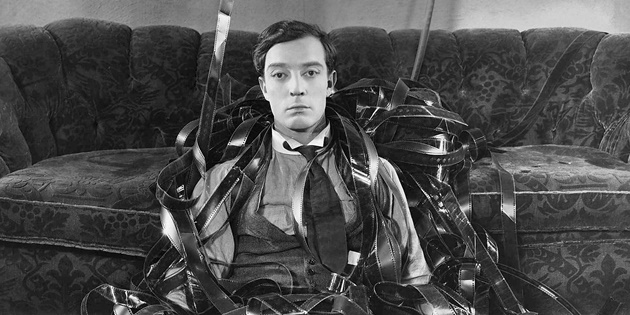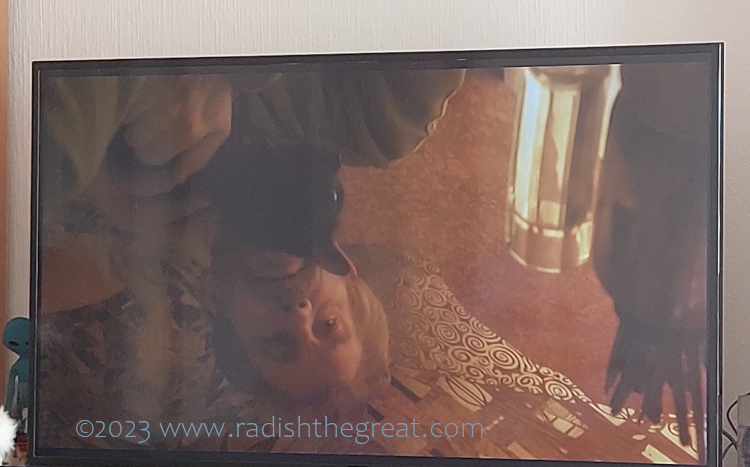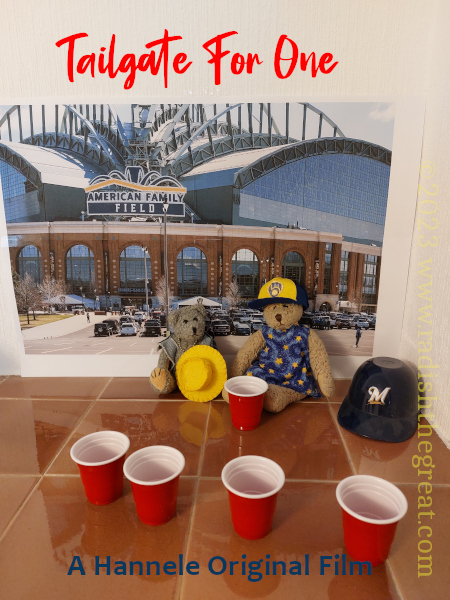Written on the Wind (1956)
arte, Deutsch
A Hudson/Bacall romance; their characters were kind of boring next to Robert Stack, playing the wealthy alcoholic Bacall was married to, and Dorothy Malone, playing his nymphomaniac sister with a thing for Hudson. Malone won a Best Supporting Oscar for her role, and rightfully so. Mostly interesting for sets and costumes.
The Roman Spring of Mrs. Stone (1961)
Warner Film, original English
The listing was simply “Vivien Leigh, Warren Beatty, 1962, Spielfilm” with no further text, and I said, “Hrmmmm….” The scene before the opening credits was interesting, then the title sequence said “based on the novel by Tennessee Williams” and “filmed on location in Rome” and I got prepared to be intrigued. The story itself was typical Williams; a broke old Contessa pimps out young, hot, broke men to rich old tourists; the freshly widowed Mrs. Stone tries one out and catches feelings.
But I should have just read the book. Beatty’s fake accent was distracting, and he spent most of the picture flopping around like a thirteen-year-old TikTokker forced to go leaf peeping with his parents. I couldn’t imagine any mature woman (and I apparently am one now, yikes) finding that attractive. Especially when he’s obviously using her to get new designer duds while zeroed in on a young Jill St. John.
Highlight: The Pimptessa has an orange and white cat named Ludwig, who gets a bit of screen time. There was also a monkey.
Sherlock Jr. (1924) and The Navigator (1924)
arte, original English (title cards)
Buster Keaton, in newly restored double-feature from Lobster Films with music composed and recorded in 2020. I saw Sherlock in 2021, on an old DVD from the library; Navigator was new to me.
The love story in Sherlock was not as cute or funny as Seven Chances, but the special effects were cutting-edge and the influence of the sight-gags on later generations of comedy-writers is readily obvious. As an example, a dream sequence where Keaton, playing a young movie-theater projectionist, jumps into the film, was very clearly a source of inspiration for “Duck Amuck“.

Navigator has a lot of funny sight gags, but the story was less compelling, IMO. Keaton and the young lady who turned down his proposal of marriage get stranded together on a cruise ship drifting out to sea. The first day, they can barely make breakfast for themselves. By the end of the picture they are more competent at daily living, but have attracted the attention of a group of cannibals, portrayed by Men of Color in a way no longer acceptable…but also in a way that wasn’t really entertaining. Bugs Bunny did it better a generation later.
Total Recall (1990)

March 2023
SyFy, original English
A favorite of young Mr Radish, who had never seen it in English and was excited to see it pop up in the listing. This was also my first viewing; less due to parental restrictions than to general disinterest. Funny how the women of the future–even the mutants!–are all sporting the hair and makeup I was striving for in 1990.
During the shoot-out of innocent bystanders in the subway, I hit pause and said, “Hey, we saw this body count ticker last year in Hot Shots…”
I didn’t hate it; I didn’t love it; it was an interesting successor to February’s Brainstorm (brain manipulation) and Blade Runner (dystopian future, also based on a Philip K. Dick story), but I didn’t miss out by not seeing it before and probably don’t need to see it again.
The Portrait of a Lady (1996)
arte, Deutsch
A very young Christian Bale smoldering in the background, obsessed with Nicole Kidman’s stepdaughter, was the highlight of this lavish period piece about stupid and bitchy American women being stupid and bitchy in Europe. My favorite theme.
This is an adaption of a Henry James novel I haven’t read by director Jane Campion, who also directed the tedious Bright Star. I was confused when she opened with footage of modern (1996) young women, as the “next on arte” teaser showed Nicole Kidman in 1870s clothing, but soon the real story began. She plays a stupid young American visiting her English uncle, who doesn’t want to marry any of the rich suitors asking for her hand. The list includes her cousin (eeeew), who convinces his father to leave the family fortune to her, so she can be free to see the world.
She gets as far as Florence, where a bitchy American introduces her to a scuzzy Frenchman (played by John Malkovich, who does scuzz so well) who seduces her so they can steal her new fortune, and she gives up her dream of seeing the world to marry. As she mopes miserably around Italy, her cousin (played by a guy I recognized from a single episode of Law and Order) comes to visit–he is dying of consumption. She realizes she screwed up, and she loves him, but of course it’s too late. And there is Yet Another Rich Suitor She Turned Down Earlier (Viggo Mortensen) pursuing her at the funeral. The film ends here. It’s unclear what she does next.
Exquisite sets and costumes, lots of annoying anachronistic inserts–at least it wasn’t tedious.
Sunshine (1999)
arte Mediathek, original English
A three-hour epic drama about a family of Hungarian Jews throughout the 20th century, starring Ralph Fiennes as a son in three different generations. The patriarch, Emmanuel Sonnenschein (German for “sunshine”), goes to Budapest as a young teen after his father, the village distiller, was killed in an explosion. He has the secret recipe for the best botanical liqueur in all of the Austro-Hungarian Empire in his pocket and apprentices himself to a distillery in the city to learn the modern trade. As a young man he builds his own factory to make the special drink and becomes rich.
He raises two sons, and an orphaned niece named Valerie, and sends them all to university in Vienna. One son becomes a lawyer; he’s a fan of the Emperor. But to advance in politics, the three change their name to the more Hungarian “Sors”. Then the eldest son, Ignatz marries the cousin (ewwww) over the objections of their parents. They have two sons before he goes off to war. After the war, when the Communists (and his brother is one) take over, he loses his place in the politics and dies a bitter man.
At this point his younger son, Adam, has taken up fencing and in order to train with the best club in the country and win a spot on the Olympic team, he converts to Catholicism. He wins a gold medal in the 1936 Olympics, and receives a hero’s welcome. But the regime sees him only as Jewish. A few years later, he and his son, Ivan, are interned, and–this scene is based on the true story of Attila Petschauer–he is brutally murdered.
After the war, Ivan, reunites with his grandmother Valerie, the only other member of the family to survive, is an enthusiastic Communist who enjoys chasing down and persecuting former Nazis…until the day he has to set up a fellow Jewish concentration camp inmate on capital charges for his Soviet superiors. (My post-watch research indicates the screenwriter, István Szabó, may be drawing from personal experience here.) Then he joins the 1956 uprising, and goes to prison.
When he is released, he changes his surname back to Sonnenschein.
We don’t learn if Ivan married or had children, even though the final scene and narration are clearly shot in the 1990s, after the fall of the USSR.
Anyway, the characters were sympathetic, except for the marrying the cousin-raised-as-your-sister thing, and the story was very well written. It did not feel three hours long. I can’t say I “enjoyed” it, with so much violence and sadness, but it is a very good film, very well-made, and I suggest you track down a copy–it was nominated for a Golden Globe in the Best Film category, so it should be easy to track down–and spend an evening with it. Be sure to bring along any teenagers you have in your life; they need to see some 20th century genocide history so they can stop the people trying to repeat it in this century.
Notable screen appearances: The Well-Manicured Man, Miss Fisher’s Aunt Prudence, and Jim from Dibley, unrecognizable as a Soviet-era general.
Sandy Wexler (2017)
Netflix, original English
After three hours of Nazis and commies, I needed a palate cleanser. Good physical comedy, random 90s celebrities playing themselves, fun soundtrack. Loved the Mike Judge bit in the ending credits.
The “All the Adam Sandler movies” project is less depressing than the “All the Moritz Bleibtreu movies” project.
City Heat (1984)
Warner Film, original English
A period (Prohibition-era) gangster film with big names–Clint Eastwood, Burt Reynolds, Irene Cara–that was less of a “comedy” than the listing suggested. Nearly as many shots fired as Total Recall…just less accuracy. Nice detail paid to sets, costumes, and cars and good musical performances by Cara, but I found myself wishing I was watching Johnny Dangerously instead.
Buster (1988)
arte, Deutsch
Picture it: October,1988, somewhere in that tiny insignificant sliver of America without saltwater. You’re listening to Shadoe Stevens count ’em down–not half as good as Casey Kasem, dammit–on your AM/FM clock radio while you’re doing some homework. The number one song is “from the soundtrack of the movie Buster.” As an avid reader of three local and regional daily newspapers, you’ve seen all the movie listings, and you’ve never seen any Buster being advertised or reviewed. A second song from this soundtrack stays at number one for even longer the next year–and you’ve still never seen a poster or met someone who has seen this movie. It must exist, it was on the radio…
After thirty-odd years of hearing DJ’s say “from the movie Buster” without ever once having seen a Phil Collins movie called Buster being shown or rented anywhere in middle America, I was surprised when Buster, Ein Gauner mit Herz popped up on arte–tragically, only the synchronized West Germany release.
Anyway, this is a film about the 1963 Great British Train Robbery. A group of fifteen men, specifically one Buster Edwards (played by Phil Collins), stole £2.3 million from a Royal Mail train. Some of them got away, many were arrested and convicted, only some of the money was recovered. Buster was able to escape with his family to Mexico, but his wife (Paddington’s Mrs Bird) hated it there and left with their daughter, and when he returned to see them he had to pay his debt to society.
It was a weird combo of heist film and rom-com, generally enjoyable even though I much rather would have heard English-accented English.
My post-watch research turns up: The movie was released to the U.S. in late 1988, and played on 217 screens over a six-week run, plus presumably some screeners on tape for the Academy of Film Awards. Back home, it was the third-highest grossing movie in the UK in 1988, and apparently caused a kerfuffle in the House of Lords–as reported in the LA Times, who gets the lead actress’s name wrong–before the US release.
One childhood pop-culture mystery solved.
My Fellow Americans (1996)
Warner Film, original English
Mr Radish found “a movie with James Garner from the 90s that I never knew about” so, what the heck. Garner and Jack Lemmon play former one-term US Presidents who deeply hate each other. They barely escape an assassination attempt apparently organized by the current president (played by Canadian Dan Ackroyd, whose father was an adviser to Pierre Trudeau…) as part of a corruption frame-up. The pair is forced to rely on each other and average, ordinary Americans to get back to Washington DC, clear their names, and force some resignations.
It’s an un-buddy road trip movie and an interesting slice of America in 1996. They hitch rides with UNC fans traveling by train to the Final Four, a group of Dykes on Bikes, and a homeless family driving a 1977 Chevy Impala Station Wagon (with the vicious metal finger-trap ash trays in the handles of the back doors…) to an uncle who can offer them work. They rent a very compact car and drive themselves for the first time in decades, barely staying ahead of the Secret Service agents trying to complete the assassination. In the end, (spoiler?) they’re rescued by an agent from West Virginia who recognized them from the Pride rings he had given Lemmon at a parade earlier in the film. I can’t remember the last time I saw anyone with Pride rings, man, but that was so 1996.
Gas was $1.17, and Long John Silvers was selling planks for 59 cents. Another time capsule. We enjoyed watching it–me probably more than Mr Radish, it plays in my world that no longer exists, not his–but it was not particularly memorable.
Notable screen appearances: Marg Helgenberger, as an uncredited one-night stand with Garner; Estelle Rolle as the White House Cook they both loved; always nice to see Wilford Brimley.
Klimt (2006)
DVD (library), English
The library files biopics under “documentary films”, and while this worked for Kirk Douglas playing Vincent Van Gogh, which I enjoyed, this film is not a biopic. This film is a fantasy (funded by the taxpayers of Austria and Germany) of what might have gone through Klimt’s syphillis-addled brain as he lay dying of pneumonia following a stroke. There were a few interesting conversations about art, a bit about the formation of the Viennese Secession, and lush costumes and sets, but it was mostly an hour and a half of John Malkovich sleep-walking grimly through whoremongering and art establishment politics.
It was disjointed and chaotic. I did not enjoy it.

Dead Men Don’t Wear Plaid (1982)
DVD (library), original English
Another film that was the source of a few HS band catchphrases that I did not see at the time. Probably a good thing; at that time I didn’t know anything about the classic Film Noir of the 1940s and 1950s that were the inspiration–and much of the screen time–for this Carl Reiner comedy, legendary costume designer Edith Head’s final film.
It took me a minute to realize Humphrey Bogart was a clip of a previous film, but as soon as I did I had a good time trying to pick out the other actors and films. I got maybe a third; I did, at least recognize Edmund O’Brien.
The Third Man (1949)
arte Mediathek, original English/German
When I saw this one a few years ago, synchronized in German but without subtitles, I didn’t really grok what a piece of crap Harry Lime was. arte gave me French subtitles, but this time I got it. They also showed the longer British cut, which I guess some people find important. Anyway, classic, Orson Welles, film noir, it’s probably at your library, go see it.
Filming location note: Lime is buried in Vienna’s Zentralfriedhof, a cemetery so big it has two bus stops inside. The final resting place of Austropop legend Falco; I paid my respects there in 2012.
Notable screen appearance: Anna’s landlady is played by Hedwig Bleibtreu, the sister of the great-grandmother of Moritz. Her parents and sister were also big-time Vienna stage actors in the 19th century.
The Big Lebowski (1998)
Warner Film, original English
I saw this one in 1998 in a regular a movie theater in Indianapolis with some friends, and none of us really understood or liked it. Turns out we weren’t the only ones. But a few years later with different friends, in a midnight showing in Milwaukee, in an arthouse that was selling white Russians at the concessions, it was better. Funnier. I finally crossed over to “fan” after my accident, in those three months when all I could manage was sitting around in my pajamas watching movies every day. In the meantime, there are a thousand memes, but it’s better as a whole.
The guy who plays “younger cop” was born in Humboldt, just north of FOD. Small world.

Murder Mystery 2 (2023)
Netflix, original English
On our way to the movie I wanted to see, Mr Radish says, “Hey, we should see this one in the promo!” so we did. Thanks for nothing, seething red N.
As bad as the first one; better costumes (Indian weddings are always good for costumes), but no Ólafur Darri Ólafsson. Predictable ending. Recognized the villain from Sunshine, huh.





2 Comments on “March Movie Madness”